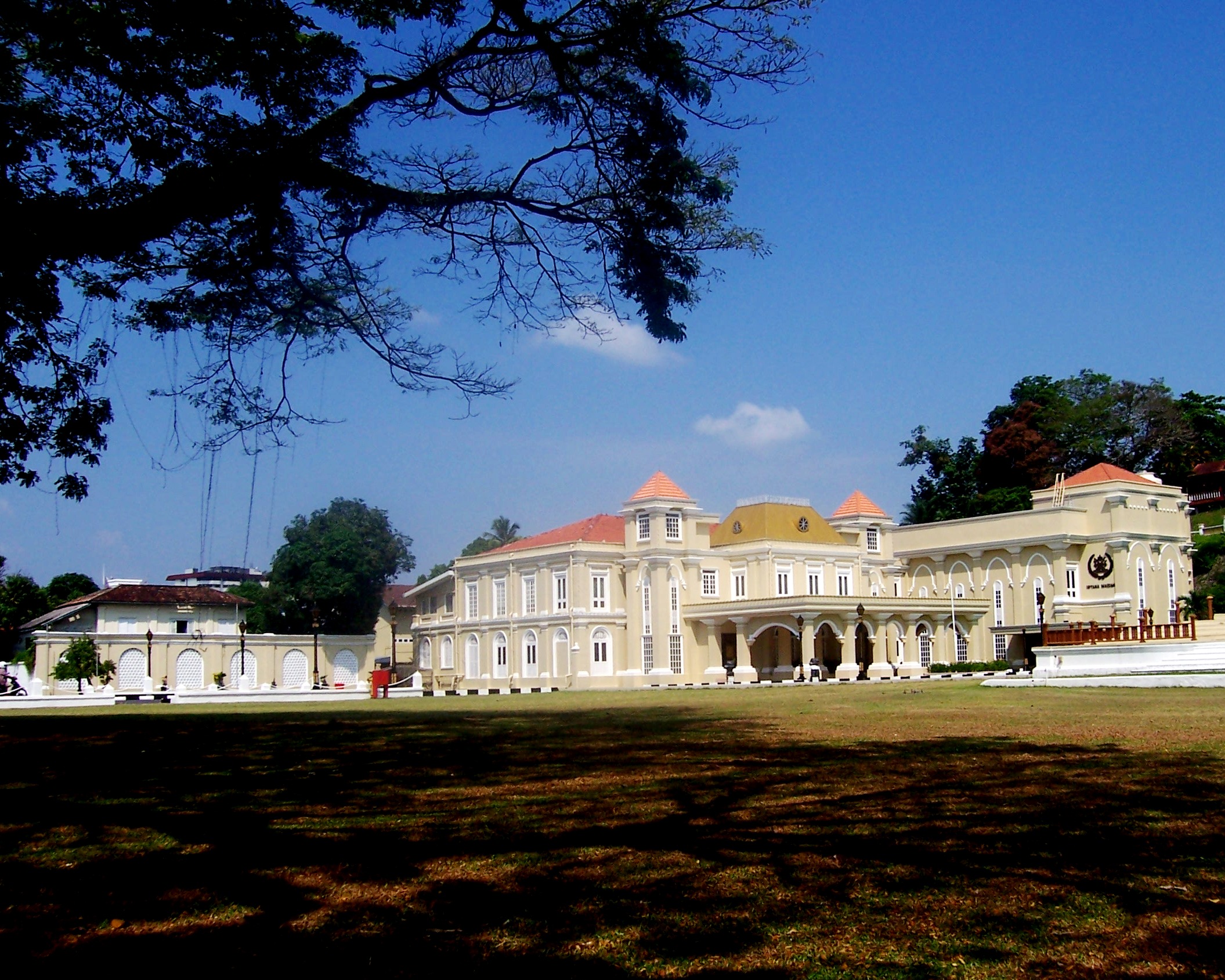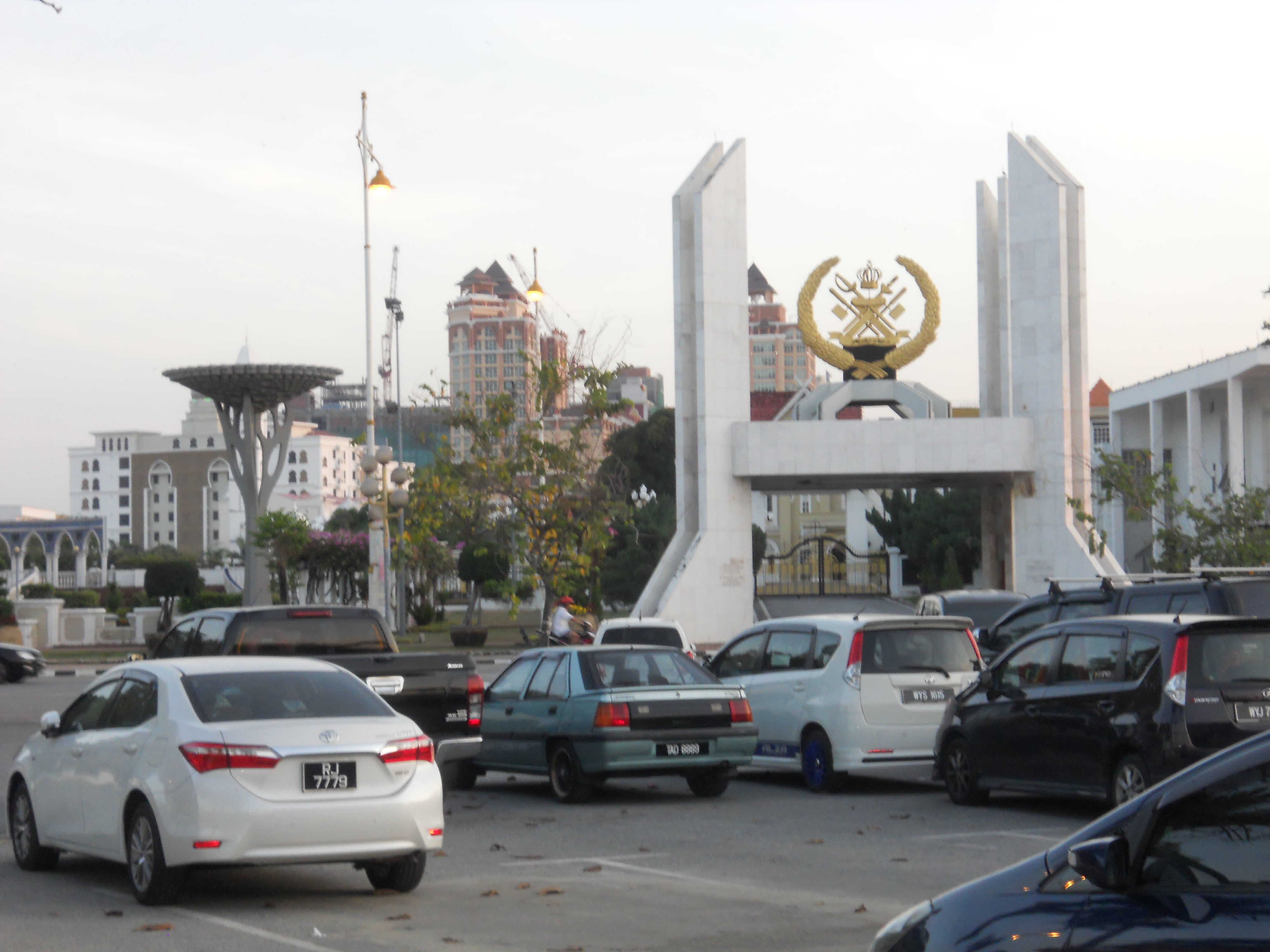Istana Maziah on:
[Wikipedia]
[Google]
[Amazon]

 Istana Maziah is the official palace of the Sultan of Terengganu. It is located at the foot of
Istana Maziah is the official palace of the Sultan of Terengganu. It is located at the foot of
Tourism Malaysia
Further additions were carried out to the Istana buildings in 1972 and 1998.

 Istana Maziah is the official palace of the Sultan of Terengganu. It is located at the foot of
Istana Maziah is the official palace of the Sultan of Terengganu. It is located at the foot of Bukit Puteri
Bukit Puteri ( Jawi: بوکيت ڤوتري, English: ''Princess Hill'') is a small hill of historical significance in Kuala Terengganu, Terengganu, Malaysia. It is located right in the middle of the city near the estuary of Terengganu River.
B ...
in Kuala Terengganu
, image_seal = Seal of Kuala Terengganu City Council.png
, image_flag = Flag of Kuala Terengganu, Terengganu.svg
, image_skyline =
, image_caption = From top, left to right:The Crystal Mosq ...
, Terengganu
Terengganu (; Terengganu Malay: ''Tranung'', Jawi: ), formerly spelled Trengganu or Tringganu, is a sultanate and constitutive state of federal Malaysia. The state is also known by its Arabic honorific, ''Dāru l- Īmān'' ("Abode of Faith"). ...
, Malaysia
Malaysia ( ; ) is a country in Southeast Asia. The federation, federal constitutional monarchy consists of States and federal territories of Malaysia, thirteen states and three federal territories, separated by the South China Sea into two r ...
. The palace is the official venue for important functions such as royal birthdays, weddings, conferment of titles and receptions for local and foreign dignitaries.
History
Istana Maziah was built to replace Istana Hijau (Green Palace) which was destroyed in a fire. Istana Hijau had been constructed during the reign ofSultan Omar
Sultan (; ar, سلطان ', ) is a Royal and noble ranks, position with several historical meanings. Originally, it was an Arabic abstract noun meaning "strength", "authority", "rulership", derived from the verbal noun ', meaning "authority" ...
( Baginda Omar) on 10 March 1870 (7 Zulhijjah 1286).
There are differing accounts about the exact date construction started on Istana Maziah. According to one record by Engku Pengiran Anum, the foundation stone of Istana Maziah was laid on Friday, May 31, 1895 (7 Zulhijjah 1312) at 10am during the reign of Sultan Zainal Abidin III
Sultan (; ar, سلطان ', ) is a position with several historical meanings. Originally, it was an Arabic abstract noun meaning "strength", "authority", "rulership", derived from the verbal noun ', meaning "authority" or "power". Later, it ...
(1881-1918). However, according to the records by Dato Seri Amar Diraja Haji Ngah Muhammad bin Yusof, the palace was built in 1897.
The architect of Istana Maziah is Tengku Chik Abu Bakar bin Tengku Abdul Jalil. He is a relative of Sultan Zainal Abidin III. Others also contributed towards the completion of the blue print and furnishing of Istana Maziah, including Engku Besar Paduka Raja Sayyid Abdullah bin Zin Al-Idrus, Muhammad bin Abdul Rahim (Encik Mat) and Dato’ Mata-Mata.
Wood supply to build the Istana came from the region of Dungun
Dungun is a coastal district of the Malaysian state of Terengganu. Kuala Dungun is the capital of the district. Dungun is made up of eleven 'mukim', or subdistricts: Abang, Besol, Jengai, Jerangau, Kuala Dungun, Kuala Paka, Kumpal, Pasir Raja, Ras ...
and this responsibility of obtaining it was entrusted to Tengku Panglima Besar Tengku Muda Kechik, while bricks and chalk were handled by Tengku Besar Paduka Indera.
Because of the constant lack of funds, the palace construction was delayed many times. When it was finally completed, the "upacara naik istana" ceremony, marking the sultan moving into the new palace was held on August 7, 1903 (14 Jamadil Awal 1312).
Several refurbishments were carried throughout the reign of Sultan Sulaiman Badrul Alam Shah (1920-1942) and Sultan Ismail Nasiruddin Shah
Sultan Ismail Nasiruddin Shah ibni Almarhum Sultan Haji Zainal Abidin III Mu’azzam Shah ( Jawi: ; 27 January 1907 – 20 September 1979) was the fourth Yang di-Pertuan Agong of Malaysia and the sixteenth Sultan of Terengganu.
Early career ...
(1945-1979).Further additions were carried out to the Istana buildings in 1972 and 1998.
Architecture
The palace stands at a height of 2 storeys and is noticeably coffee brown in colour. It is a blend of modern and traditional architecture with its tall shuttered windows that resembles a French chateau. About 20 Malay and Chinese workers who were skilled in art, wood craft and carpentry were involved in the building of Istana Maziah. Its early foundations were built from a mixture of chalk, clay, sand salts, egg whites, lime and honey.Dataran Maziah
Dataran Maziah, which is located in front of Istana Maziah, is a mini-park beautifully adorned with landscapes of shrubs, trees and paved walkways. In the centre of the park, stands an impressive replica of betel chewing instruments such as ''Gobek Sireh'' and ''Kacip Pinang'', also known as ''Tepak Sirih''. The ''Tepak Sirih'' symbolises the culture and traditions ofTerengganu
Terengganu (; Terengganu Malay: ''Tranung'', Jawi: ), formerly spelled Trengganu or Tringganu, is a sultanate and constitutive state of federal Malaysia. The state is also known by its Arabic honorific, ''Dāru l- Īmān'' ("Abode of Faith"). ...
.
References
Palaces in Malaysia Royal residences in Malaysia Buildings and structures in Terengganu {{coord, 5, 20, N, 103, 08, E, display=title, region:MY_type:landmark_source:GNS-enwiki